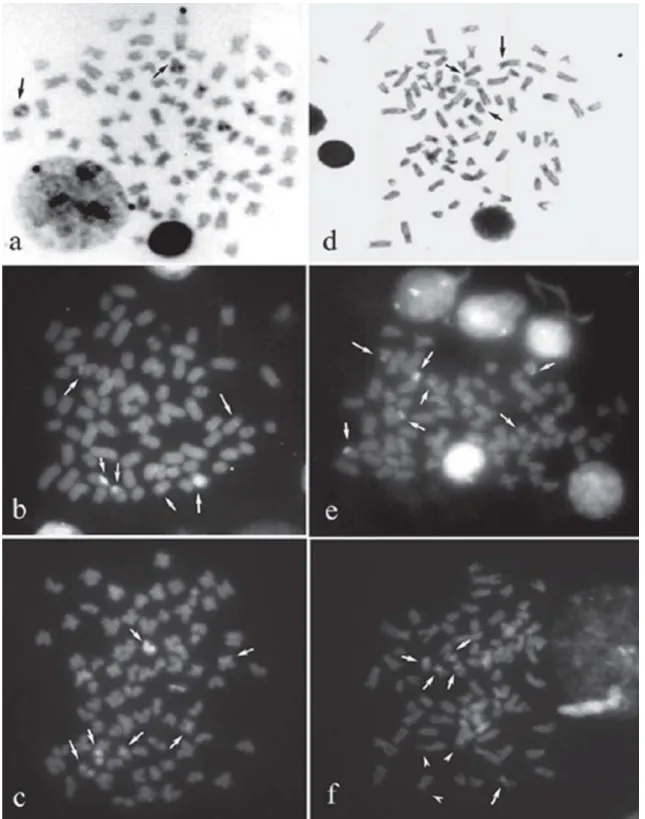Cytogenetic characterization of Hypostomus nigromaculatus (Siluriformes: Loricariidae)
Texto
Imagem


Documentos relacionados
parvus in the morphology and size of the chromosomes, in the number of chromosomal arms, in the NOR location (detected on the short arms of pair 1), and in the pattern
Cytogenetic characterization of B chromosomes in two populations of Iheringichthys labrosus (Pisces, Pimelodidae) from the Capivara Reservoir (Paraná, Brazil).
Physical Mapping of the 5S and 18S rDNA in ten species of Hypostomus Lacépède 1803 (Siluriformes: Loricariidae): evolutionary tendencies in the genus.. Loricariidae) inferred
Abstract: As in ancient architecture of Greece and Rome there was an interconnection between picturesque and monumental forms of arts, in antique period in the architecture
Karyotypes of male (a) and female (b) Ancistrus ranunculus after conventional Giemsa-staining, evidencing the sex chromosomes (box) and the NOR-bearing chromosomes after
Fig. a ) Giemsa-stained karyotype of Astyanax jacuhiensis ; b ) Chromosomes with positive sites after silver staining; c ) Metaphase plate with fluorescence in situ
The cytogenetic analysis of Characidium showed a conserved diploid number of 2n=50, with a predominance of metacentric and submetacentric chromosomes (Figs. In Characidium cf.
In classical cytogenetic studies in Aloe, secondary constrictions on the long arms of one or two pairs of large chromosomes and/or on the short arms of a pair of small chromosomes